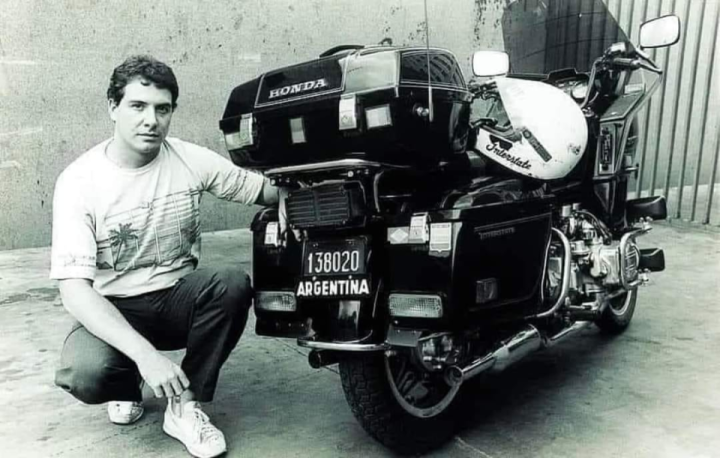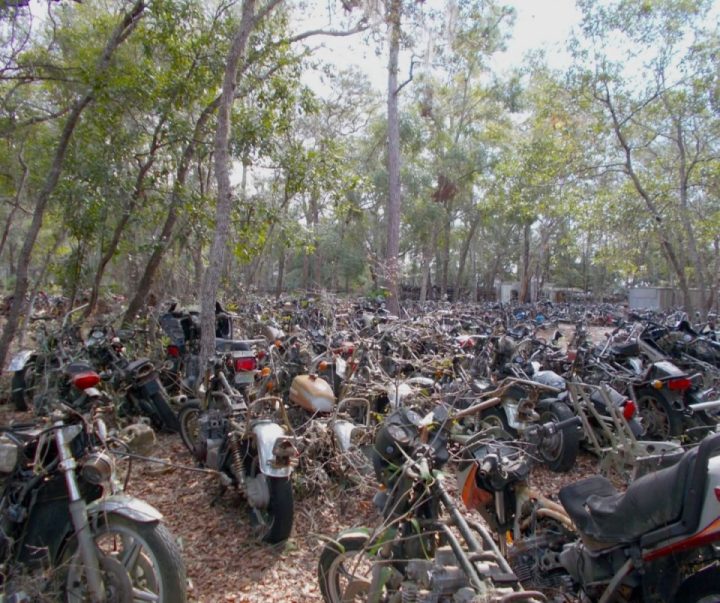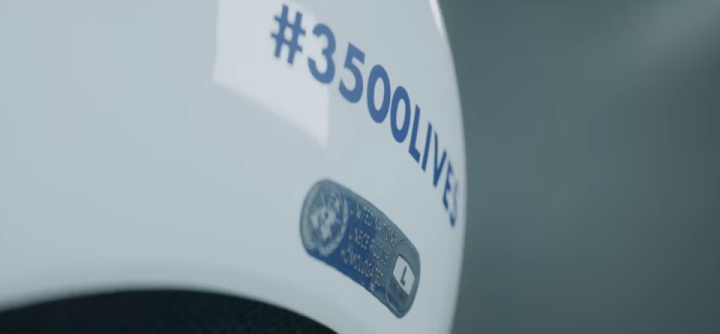
50 rules that every rider should know
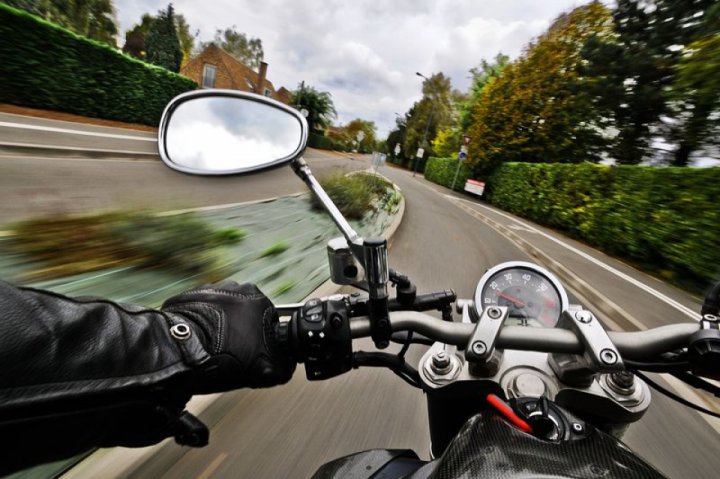
1) Consider yourself invisible. As for many drivers, you are invisible. Never take any action, counting that the other driver noticed you, even after visual contacting. Motorcycles are not always reflected in the minds of "four-wheeled" colleagues.
2) Be polite. The consequences of quarreling with any “jerk” or cutting him on the road can start badly and end even worse. Imagine that it was your granny, and think about it again.
3) Get dressed taking into account the possible fall, not a ride to the beach. Of course, the store you need is only 5 minutes away ... but no one plans to have a crash. And the 35-degree heat is no excuse for putting on a t-shirt and shorts.
4) Hope for the best, but be prepared for the worst. Always assume that the car in the oncoming lane can turn in front of you as soon as the light changes, with or without turning on the direction indicator lamp.
5) Leave your Ego at home. Was you really the fastest on the road? It will be really interesting only to cops.
6) Be attentive. Yes ... there is a hot naked babe on the big poster... and yes ... the shock seems to be creaking somehow. In the meantime, you're halfway to the Big Trouble. Focus.
7) Mirrors show only a part of the whole picture. Never change the direction of your movement without first looking over your shoulder. Make sure that there are no more obstacles in the blind zone.
8) Be patient. Wait a couple of seconds before you start overtaking; keep away from curbs; do not speed up on the highway after the closed turn. What you do not see is just waiting for you. An extra look could save your ass.
9) Watch the speed of approach. Overtaking cars with double speed or changing lanes in order to overtake a number of stopped cars is asking for trouble.
10) Beware of curbs and dividing lines.Many unpleasant "surprises" can wait for you on the side of the road: nails, antennas, boxes from McDonalds, etc. Garbage pills up on both sides of the road.
11) Cars turning to the left are leaders in the death of motorcyclists. Do not think that someone will wait while you beat the junction. They also want to do this.
12) Beware of cars that want to beat the traffic lights in the transversal lane. The first few seconds after changing to green are the most risky. Look in both directions before riding through the junction, checking the transversal lane.
13) Look in the mirror. Do this every time you change lanes, slow down or stop. Be ready to move over if another vehicle is trying to take the place that you planned for yourself.
14) The distance. Do you remember driver Ed? One second is good for a speed of 10 km / h. Scan the road 12 seconds ahead of you for potential risks.
15) Be careful of the modified cars. They are fast and their drivers are usually aggressive. Do not think that you could win, using the kick-start from a traffic light. If you change the lane without an extra glance, there is a chance to become a beautiful decoration of some Nissan’s hood.
16) High speed on turns. This is the main cause of accidents of single riders on winding roads and tracks. Slow Entry and Quick Exit is an old rule that still works.
17) Do not trust wild animals and pets. If you see a warning sign, slow down and look around. Cows can also gallop like deer.
18) Learn to use both brakes. The front brake does most of the braking work. But a small rear brake can “calm the nervous suspension” before entering a corner.
19) Hold 2 fingers on the front brake lever - always. Save a full second of reaction time, which will give you a 88 foot win (~ 25 meters) at a speed of 60 mph (~ 100 km / h). Think about it.

20) Look where you want to go.Motorcycle goes where you look. Therefore, focus on the “destination” rather than the “problem”.
21) Make your eyes move. Traffic is constantly changing. Scan the road for potential risks. Don't keep your eyes on anything for too long. Unless you’ve already got into trouble and trying to get out of it.
22) Think before doing. Carefully drive around the slowly moving car, otherwise there is a chance to enter the driver's door at the moment when the car suddenly turns left right in front of you.
23) Raise your gaze. It is difficult to move reacting only to the front car. Lift your eyes and scan the road as far as possible. In case of trouble, change the trajectory.
24) Take your mind with yourself. A large amount of accidents occur in the first 15 minutes at a speed of less than 60 km / h in the area of junctions or adjacent roads. Yes, it could be your junction.
25) Stop entirely at the STOP sign. Put your foot on the road. Look again in both directions. With such minimal costs, you can easily identify potential risks.
26) Never try to pass between the stopped cars. The cars probably stopped for some reason, and you don’t see why, until it’s too late to do anything.
27) Don’t ride on what you can’t cope with. If your weight is 50 kg, then do not sit on a motorcycle with a weight of 300 kg. If your height is 160 cm, then do not ride on big choppers.
28) Keep an eye on opening doors of cars. Hitting the opened door is as painful as crashing into the side of someone at full speed.
29) Don’t get into the gauge at junctions. Be ready for a double stop when driving through a 4-way junction. If you expect the transversal lane to stop, it can be a painful surprise if this does not happen.
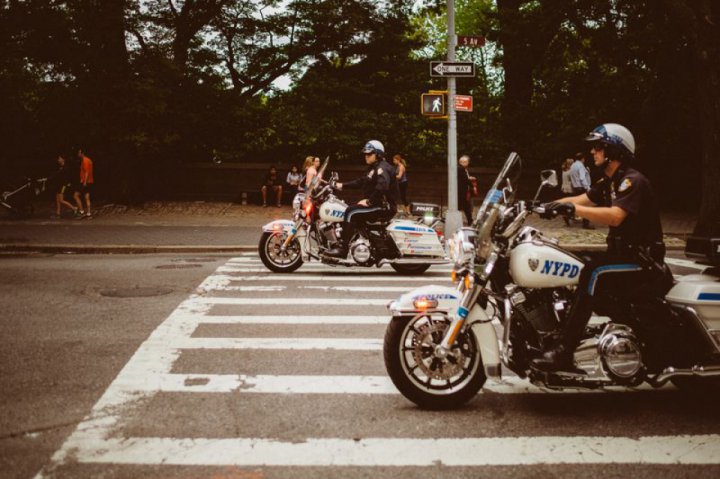
30) Stay in your “comfort zone” when riding in groups. Riding above your potential, trying to catch up with the group, may end up in a ditch. A normal group that is worth riding with will always find a suitable piece of the road to wait for you.
31) Give your eyes a chance to adapt. After leaving the well-lit garage at night - do not rush, wait a couple of minutes and let your eyes get used to the dark.Otherwise, the first couple of hundred meters you will ride like a blind.
32) Improve slow U-turn. Practice! Place your ass on the external edge of the seat and tilt your bike inside the turn, using your body as a counterweight.
33) Who put the stop sign on top of this climb? Do not panic! Use the rear brake so as not to roll back. Use gas and clutch very smoothly.
34) If the road looks slippery, then consider that it is so. Suspicious spot on the road. It could be anything. Diesel, Mobil 1, gravel, etc.Or nothing, only imagination. It is better to slow down for "nothing" than to land on the head.
35) Boom! The tire blew out! Now what? No sudden moves. Motorcycle is not happy. Be ready to make a physical effort to keep the balance. Gently slow down and smoothly move down to the side. Deep breath.
36) Drops on the helmet windscreen. It started to rain. A slightly wetted road surface can be much more slippery than during a heavy rain and you never know how good the grip is.Increase concentration, caution and smoothness to maximum.
37) Emotions under control?Emotions are as strong as any drug. So check your emotions before getting to ride. If you are angry, sad, tired - go by bus.
38) Wear suitable clothing. Clothes must fit you and the weather. If you are hot, or cold, or you are fighting with a jacket that presses on your shoulders, then you are dangerous. Just like that.
39) Leave your iPod at home. You will not hear this cement truck on time, as the volume of your MP3 player is turned to maximum.
40) Learn to lean. You must be able to perform two quick successive turns. Sudden slope to the left, passing obstacles and return to the previous trajectory. Master this maneuver.

41) Be smooth at low speeds. Use the rear brake, especially in low-speed maneuvers. This will add the desired portion of stability by minimizing the undesired weight transfer.
42) Blinking is good for you. Turn signals attract attention with their flashing, right? In this way, a few light touches on the levers or brake pedal just before braking itself will make your brake lights more visible to those behind you.
43) Junctions are wild. Place another car between your bike and the possibility that someone on the right will decide to run a red light or will not stop at the STOP sign. The chance that you can crash will be halved.
44) Adjust your peripheral vision. Look at the center of that wall. Start scanning the wall by spreading your attention, rather than moving your eyes.The more you can see without turning your head, the faster you will begin to react to trouble.
45) Alone at a traffic light. Try to place as much of your motorcycle as possible over the sensor wire, which is usually located under the asphalt a meter from the stop line. If the traffic light does not switch from red to green, then try tolower the steps on the ground. This is usually enough.
46) Everything is much harder to see at the darkness. Always check your headlight adjustment and install a clear windscreen on the helmet. And try not to drive at night.
47) Do not drive near or behind a large truck. If one of the 18 tires bursts - which happens quite regularly - then the picture can be unpleasant. Unless you like pieces of flying rubber. Keep the distance.
48) Eliminate panic from an emergency stop. Work on a close relationship with your front brake. Find a place where no one will disturb you, and train your braking. Find the “thin line” between the maximum pressure on the brake lever and the front wheel lock. Practice over and over.
49) Make sure the tires are all right. All of the above does not matter if the “skin” of your motorcycle is not safe. Check tire pressure before every ride.
50) Take a deep breath. Count to 10. Forget the carelessness of a clown who has passed you at a speed of 130. Take a deep breath ... otherwise your life may suddenly end…
#Moto #Bike #Sportbike #Motorcycle
















